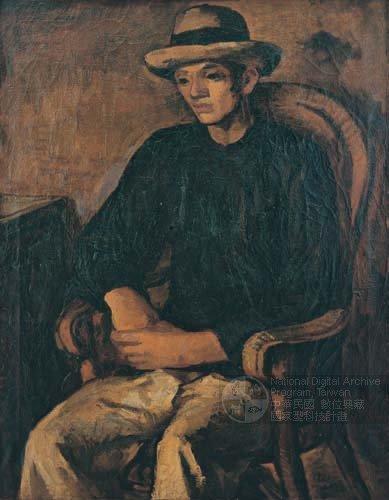=> HOME of Structured Data for Bios
李石樵 Li Shih-chiao
|
Structured DataLi Shih-chiao
李石樵
Lee Shih-chiao
ISNI 0000 0000 6345 4641
Li Shiqiao
Painter
https://en.wikipedia.org/wiki/Lee_Shih-chiao
https://zh.wikipedia.org/wiki/%E6%9D%8E%E7%9F%B3%E6%A8%B5
http://digitalarchives.tw/Exhibition/1261/1.html
Lee Shih-chiao (Chinese: 李石樵; July 13, 1908 – July 7, 1995) was one of important Taiwanese artists early in the Japanese Colonial Period (from 1895 to 1945).
Born: 1908-07-13
Taishan, Taipei, Taiwan
Died: 1995-07-07
Nationality: Taiwanese
Relations: Alumni of: Taipei Normal School
Alumni of: Tokyo School of Fine Arts
Member of: Official Taiwan Art Society
Follows: Ishikawa Kinichiro
Follows: Okada Saburosuke
Taught at: National Taiwan Normal University
Important Roles: Creator of: Younger Brother (四弟像)
Founder of: Tai-Yang Art Society
Is a character in: La Grande Chaumiere Violette 紫色大稻埕 (2016 TV series)
Award and recognition: In 1927, his watercolor painting entitled Taipei Bridge was selected for the first Taiwan Art Exhibition (Taiten).
Award and recognition: Li became the first Taiwanese painter to receive review exemption status for the Shin Bunten Exhibition in Japan.
|
Sources and references
- 王德育,〈高彩度的追逐者—李石樵〉,《臺灣美術全集8‧李石樵》,臺北市:藝術家出版社,1992,頁17-43。
- 顏娟英編著,《臺灣近代美術大事年表》,臺北市:雄獅圖書公司,1998。
- 李欽賢,《高彩‧智性‧李石樵》,臺北市:雄獅圖書公司,1998。
- Starting Out from 23.5°N: Chen Cheng-po, Academia Sinica Digital Center (ASDC). http://chenchengpo.asdc.sinica.edu.tw/friend_en
© Marcia Lei Zeng for Academia Sinica Center for Digital Cultures
